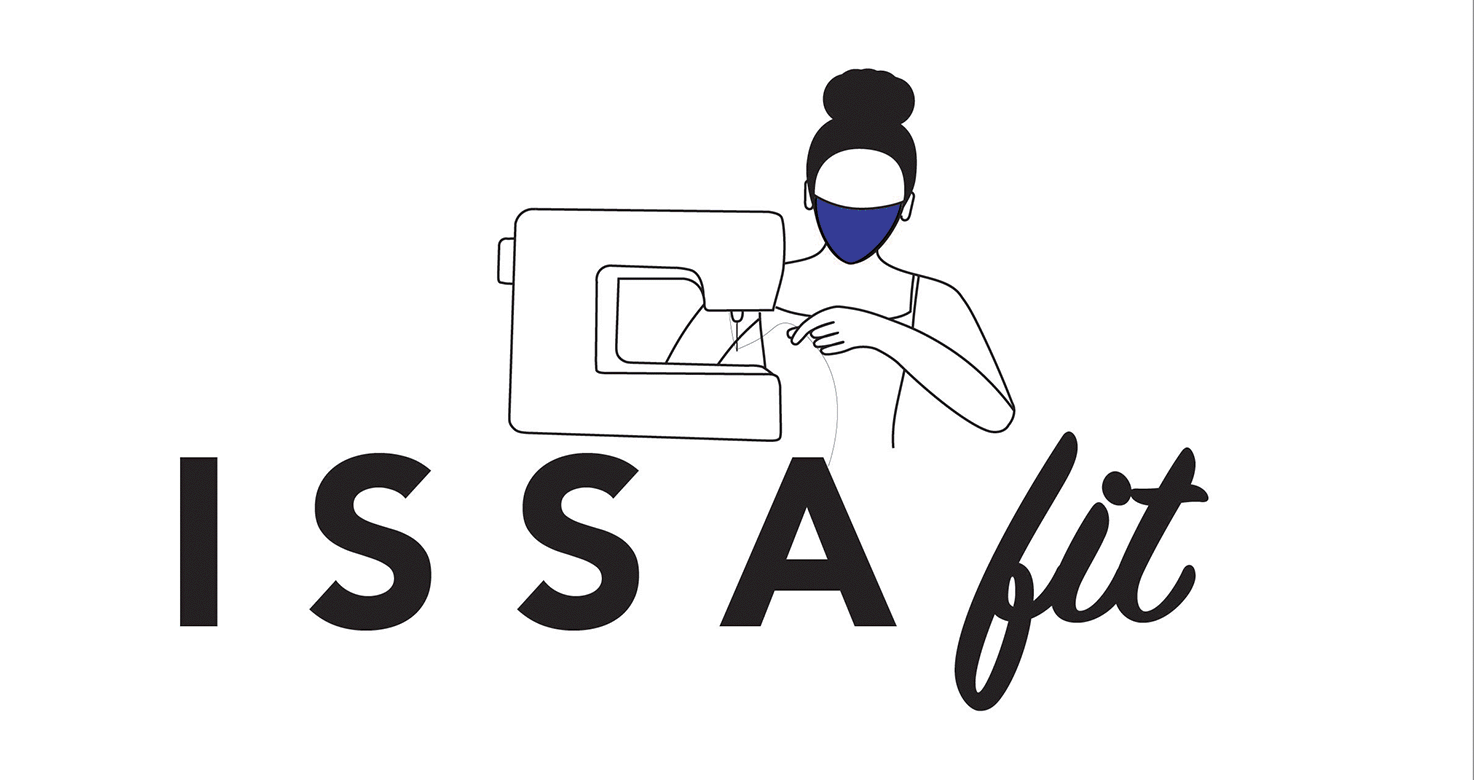With so much time spent at home, it's important to take advantage of the time to wear comfortable clothes! That's why I decided to make my mom a new pair of comfortable pants for Mother's Day. There's a pair she's worn for years that are starting to get a bit too worn out, so I thought I'd replicate the style she loves onto some fresh fabric!

A note on sewing knits:
Knits can definitely be a challenge, but it's worth it to stick with it! For this project, if you've never sewn on stretchy fabric before, I'd recommend testing out some seams on scrap pieces of the fabric you're going to use before sewing right onto the project. A zig-zag stitch is the easiest stitch to use on stretchy fabric, especially when you set the stitch width high on your machine. Additionally, try selecting a needle for your machine that has a duller point. If you get a pack of machine needles, it should include a guide for which needles go well with knits.
Materials

1.5 yards jersey fabric
Thread
1-2" wide elastic band
A pair of sweatpants or pajama pants to replicate – this tutorial works best with pants that do not have any ruffles or bunches at the waist. Look for pants with a waistband that is around the size of your waist (or for Mother's Day, your mom's!)
Sewing machine
Step 1: tracing your sweatpants onto the fabric
Lay your fabric out on a flat surface and fold it over so that you are tracing onto two layers of fabric at once. Be sure that your fabric is laying completely flat with no wrinkles.
Turn your sweatpants/pajama pants inside out and pull the crotch out from the centerpoint until it looks like the image below. Fold along the side seam of the pants so that you have the outline of only one panel (1/4 of the pants).

With a marker, chalk, or pins, outline this shape, and cut the fabric to this outline, leaving 1/4-1/2" seam allowance around it. Be sure to cut both layers of the fabric at once in this shape.
Pull the other side of the crotch out and, again, fold the pants so that one panel is showing. Mark the outline and cut two layers. You will notice that the curve of the pants will be greater for the back side than the front.

Last, cut the waistband. To do this, you'll want a rectangle that is 3 inches long and as wide as the waistband on the pants you have. You can measure the waistband and cut a fabric strip that length, or just double the fabric over and line one side of the waistband up with the fold of the fabric and trace a rectangle to the otherside of the waistband on the pants. Cut the elastic band to the same length.

Once you've finished cutting, you should have the following pieces of fabric:
2 "front" panels that have a more shallow curve along the crotch
2 "back" panels that have a deeper curve
1 waistband from your fabric
1 elastic band cut to the length of your waistband

Step 2: sewing the panels together
Start by sewing the front panels together along the curve ("the crotch"). Use a zig-zag stitch on your sewing machine in order to alow the fabric to stretch.

Repeat with the back panels.
Open the two sets of panels so that you can see a side of two legs on the front side of the pants, and a set on the back. Lay one on top of the other and align the legs so that their edges meet. Be sure to keep the seams along the curves stay facing out so that all of your seams end up on the inside of the garment.

Pin together and sew the sides on either side of the pants and the inner seams, as shown in the picture below. If the edges of the panels don't align when laying flat ontop of each other, pull them to meet, being sure to align seams you've already made when necessary.
Once all of this is sewn, you should have a pretty nice shape for your pants! All that's left is the waistband.
Step 3: connecting the waistband
Fold both the elastic band and the fabric rectangle for the waistband in half and sew along the edge on both the elastic and the fabric rectangle to create a loop.
Fit the elastic band around the fabric rectangle, and fold the fabric in half around the elastic to sandwich it, creating the waistband.
Line the raw edges of the waistband up with the raw edges of the top of your pants and pin together, making sure to get both layers of the waistband fabric, as well as the fabric from the top of the pants. The waistband should go on the "outside" of the pants; the side where the seams are not visible.
Step 4: finishing touches
You can decide for yourself how much you want to finish these pants.
My fabric does not fray at all, so I was good leaving the hem unfinished. However, you can hem these, top stitch, and even sew down the elastic band if you'd like! It's all up to you and your fabric.
